The GR Corolla is finally here, albeit in limited numbers that has demand peaking beyond supply. It was a car that Toyota had to make.
The GR Yaris garnered such rave reviews in Europe (and here too, we named it our Performance COTY) that Toyota simply had to adapt the formula for the Corolla, giving them an AWD GR rocket to sell Stateside.
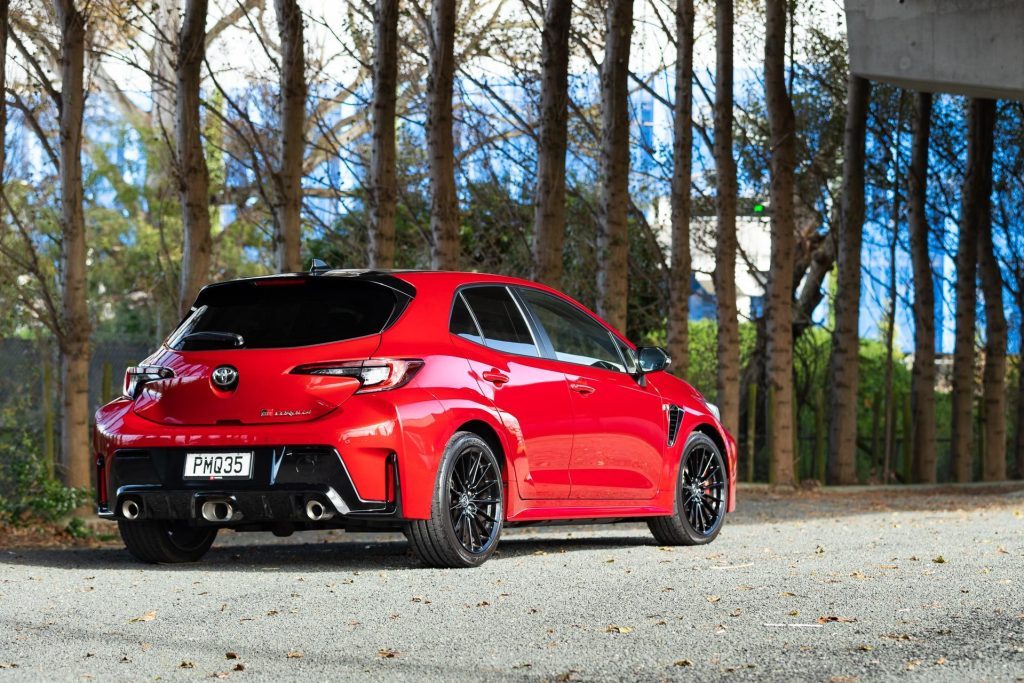
And luckily, they make a few for RHD markets too. Is it quite the firecracker that the Yaris is? Or is the larger, five-door model more simmering than sizzling?
A few of the specs then for those that haven’t been paying attention. While there are three trim levels available in other markets, here we get the Circuit Edition, the middling model. And as the name suggests, it’s a bit more hard core with track time in mind.
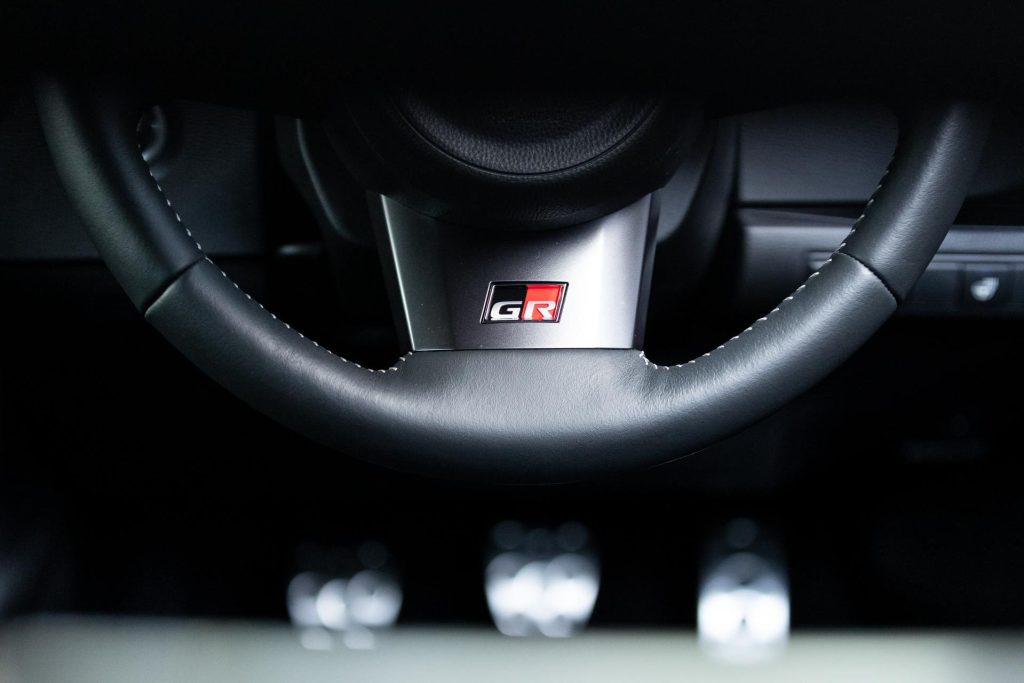
So cue front and rear Torsen limited-slip diffs, the 18-inch cast alloys, forged carbon-fibre roof, the bulging bonnet with functional vents and a rear spoiler.
Just 150 are allocated to NZ, not bad considering the US is only getting 1500 all told (although they can wander down to their Toyota dealer and pick up the base model Core for $US35k).
The power plant is the same little three cylinder from the Yaris that is bursting with both power and character. The hand crafted G16E-GTS 1.6-litre turbo produces 221kW and 370Nm at 3000-5500rpm.
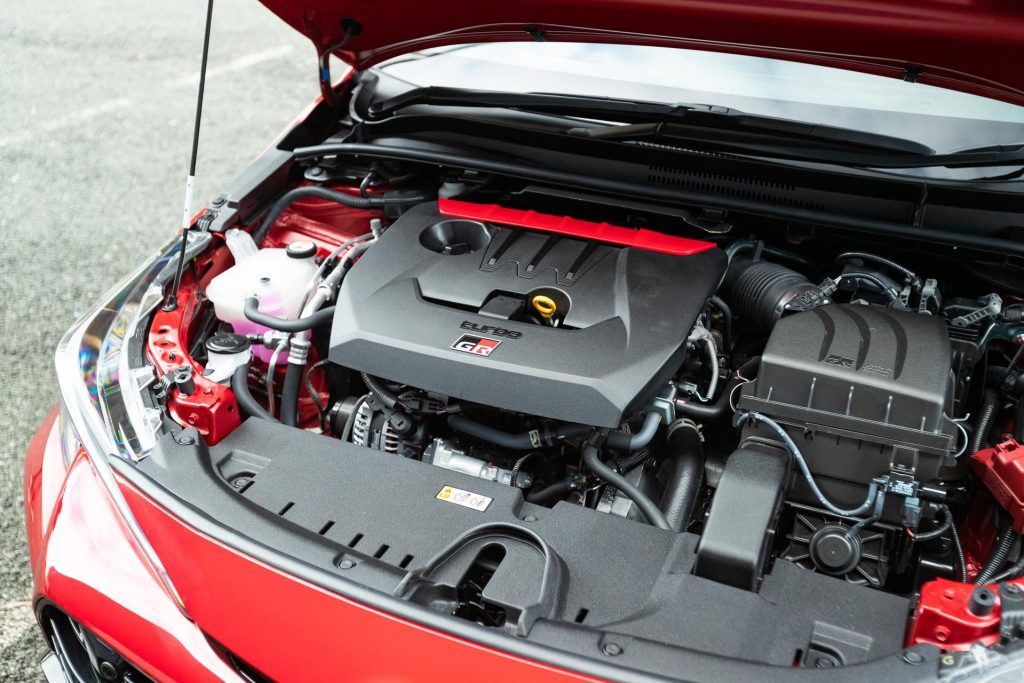
That’s a bit more than the Yaris, conjured up thanks to new pistons, larger exhaust valves and a ball-bearing type turbo.
There’s a better zorst system too, with three outlets. Like Yaris, you can only get it with a six-speed manual and there’s the same GR-Four all-wheel drive system with three selectable torque split modes: Normal 60:40, Sport 30:70, Track 50:50.
They’ve stiffened up the chassis (more welds and adhesives) and lowered it on better dampers and springs, with beefier sway bars.
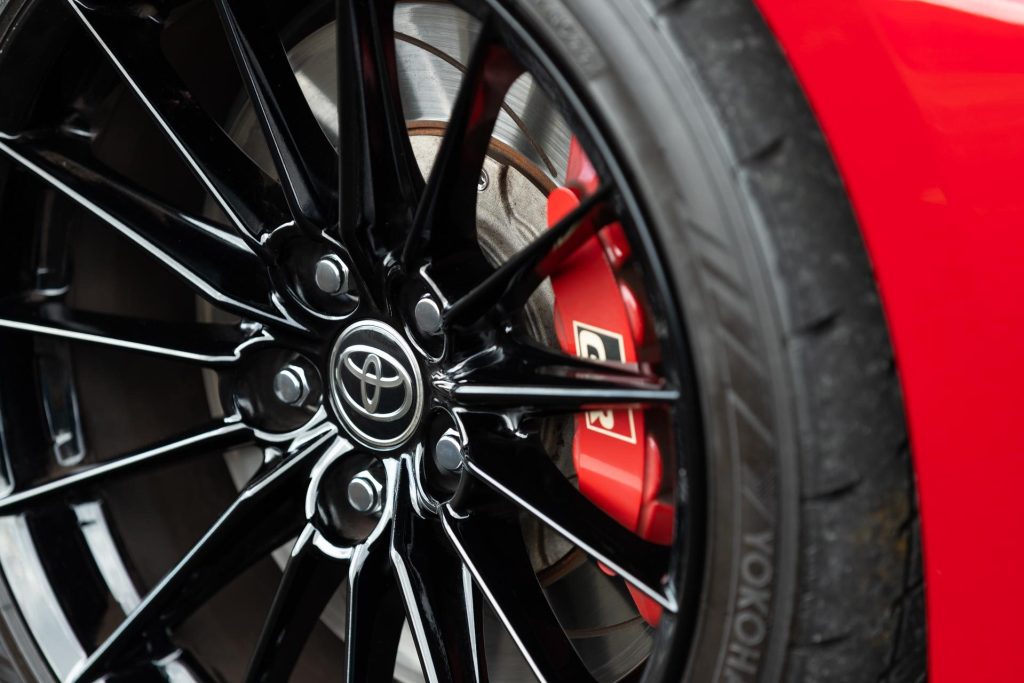
There are better stoppers too with 356mm slotted rotors and four pot calipers on the front. It’s said to weigh in at 1480kg, over 210kg heavier than the smaller three door Yaris.
Before we get into how it goes when you’re going all out, what about the other 98 per cent of the other time when you’re not?
While the triple is highly strung (outputting 185hp per litre, or more than an AMG GT Black Series, Ferrari F8 Tributo or the Porsche 911 GT2) it’s perfectly fine on the daily. It’s easy to get off the mark, and responsive if a little grumpy if you let it labour down low, and so it likes to be kept around the 2000rpm mark.
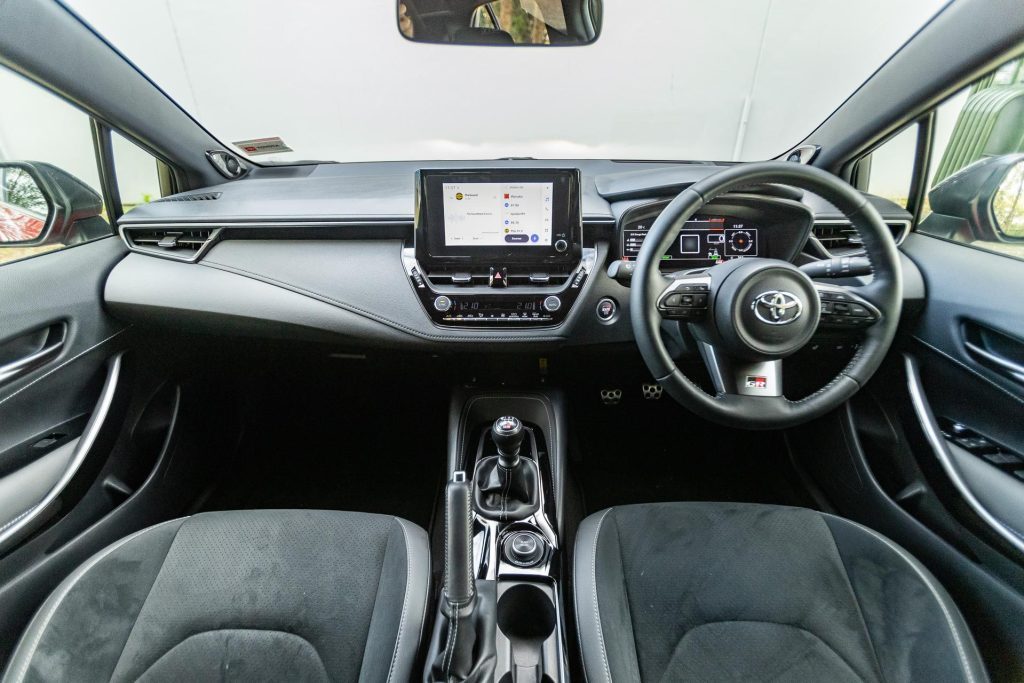
That’s where it’s perky, and ready to go. It’s not great on fuel around town, where it hoovers through premium at a rate of almost 13L/100km, though this figure will settle to around the 10L/100km mark with more motorway miles.
In the Normal driving mode, the steering is lightweight and throttle response is more traffic friendly/less racy. The clutch pedal has a measured weight to its action, but it’s no work out. The gearbox slots itself easily around the gate, even when cold. Weird how you have to opt in for the iMT function however.
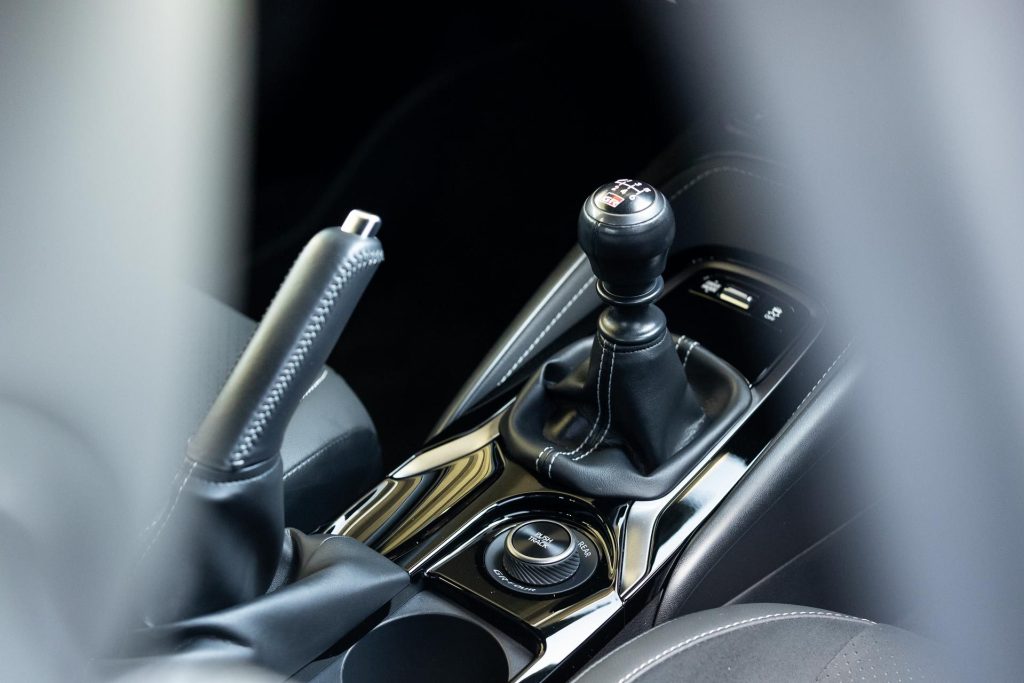
That’s the Intelligent Manual Transmission, the thing that blips the throttle for smoother, rev-matched downshifts. So it would be better then if the button wasn’t hidden out of the way on the lower dash.
Conveniences like a hill holder also make it no sweat in traffic, there’s even active cruise (although being a manual, it has its limitations) and there’s lane keeping and other minders to keep you safe. Some hot hatches have terrible turning circles, but not this one and it doesn’t have hissy on full lock either.
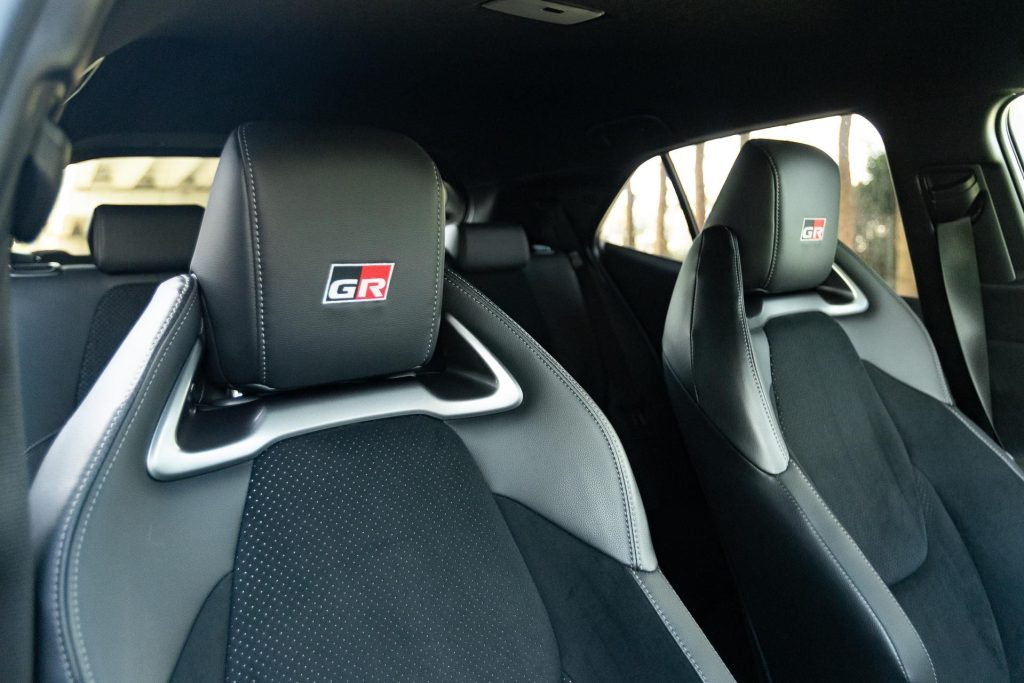
The GR Corolla has a much better driving position than the GR Yaris, being that bit lower and making you feel more at one with the car. It has the same seats, and comfortable they are, as while it has abundant bolstering, these wings are of the cushy kind and no hindrance to entry or exit.
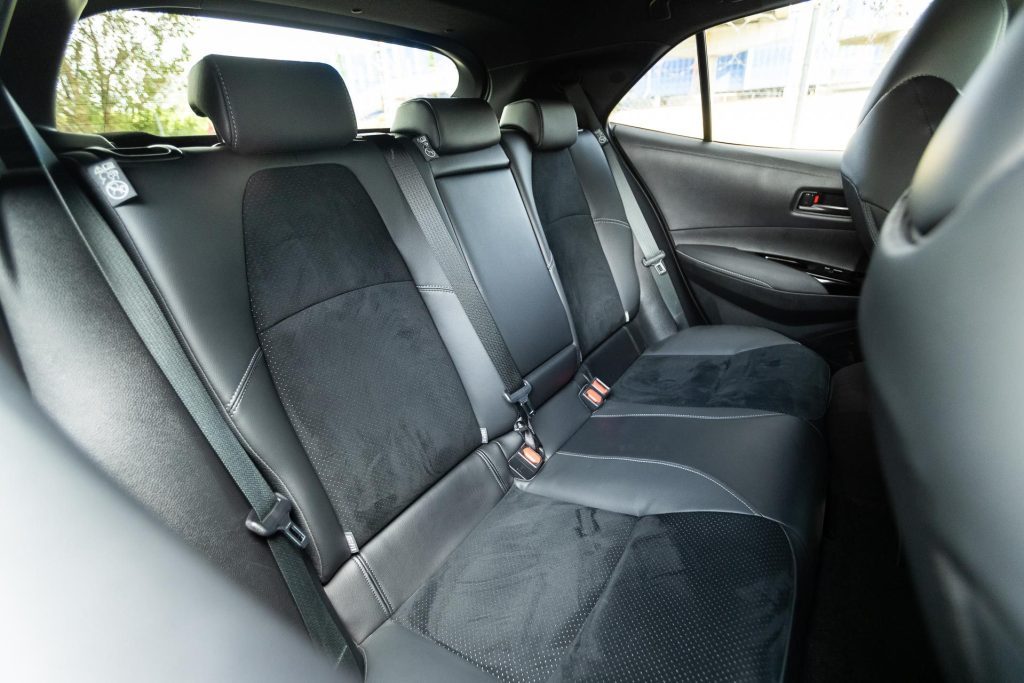
After longer stints at the wheel, you’ll feel it lacks for lumbar support however. They are manually adjusted, but it’s really no biggie.
It’s a Corolla, so there aren’t any ground clearance issues, but the ride quality sure is sporty. The fixed rate dampers don’t have a button to set them gooey and soft, so progress is always fairly rigid. But as the dampers are quality, when they do hit a bump, it’s quickly sorted and any harshness isolated.
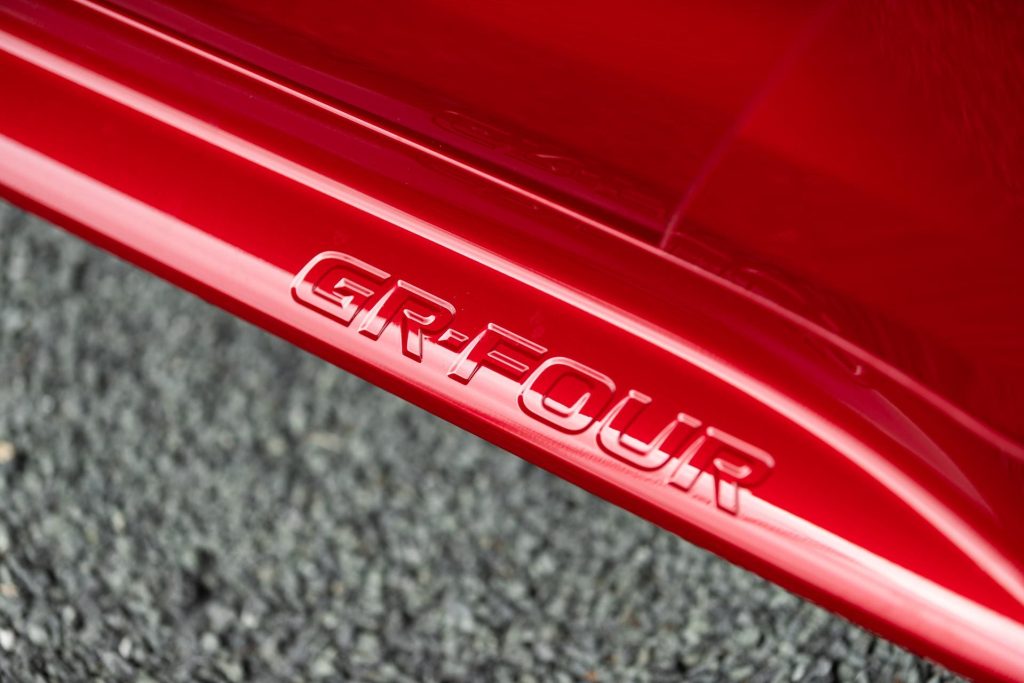
The Yokohama Advan tyres can make a few interesting noises on different surfaces, and do make a rumble at speed. Toyota cabins are well screwed together usually but, because this one rides a bit harder, (and has been subjected to a few hard sessions) there were a few squeaks and rattles evident.
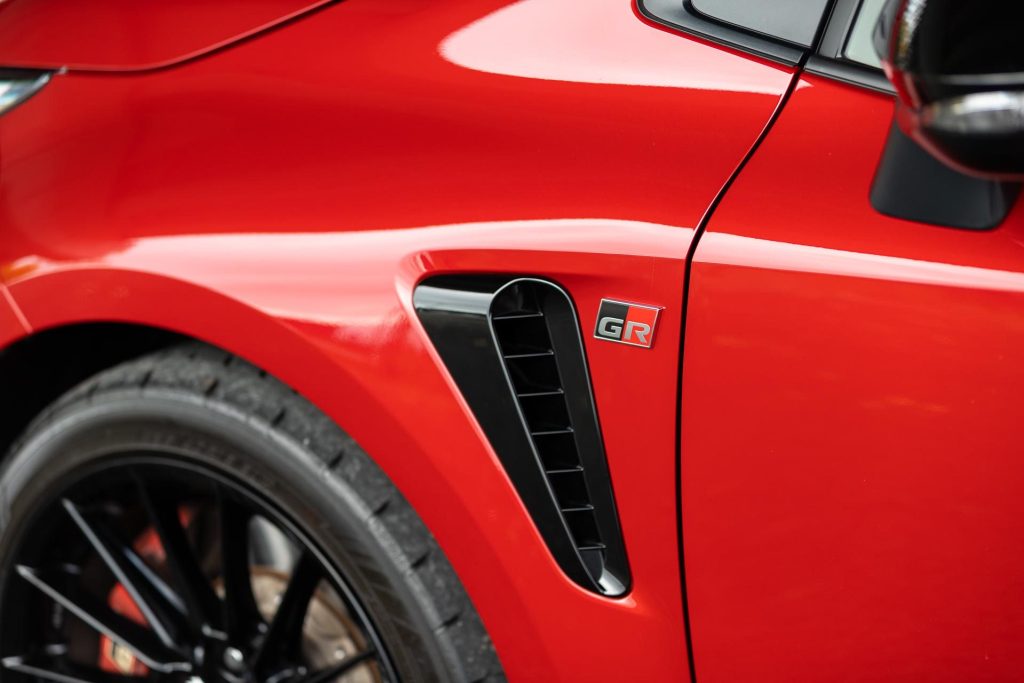
The triple has a unique note. Sometimes it sounds like an old Daihatsu, but the turbo whistle and wastegate melody will be welcomed by retired boy-racers. The pipes are pretty loud first thing in the morning on startup too.
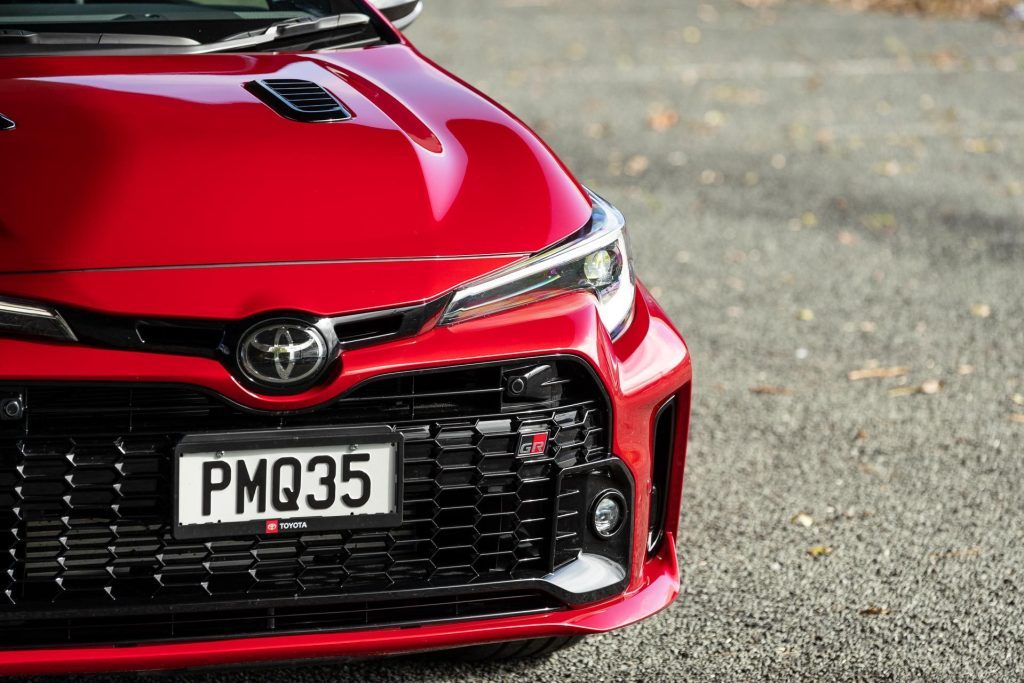
Being a five door, it’s the most practical GR yet (LandCruiser aside). It might not be the most spacious hatch, but the kids will fit fine in the back, and there are three seat belts back there, and Isofix too. Boot space is not a Corolla strong point and you can’t lower the high set load floor here either as they’ve relocated the battery to the boot and there’s no spare wheel.
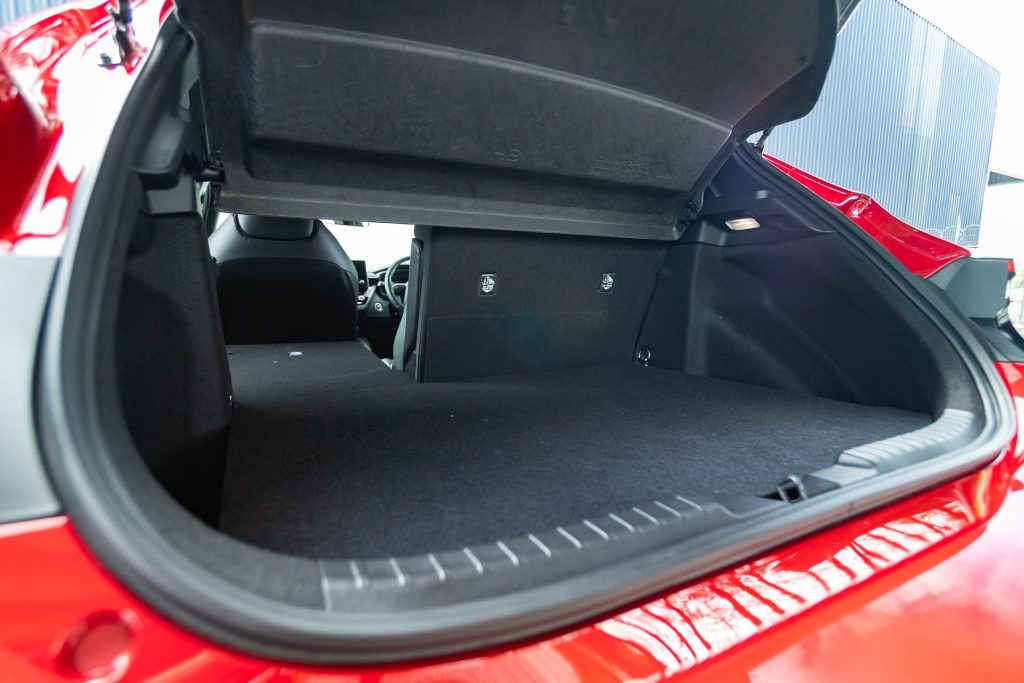
That it does. Find yourself freed of the city limits and on roads yet to be targeted for restriction by the mad regime, and this thing delights. The GR is quick enough without going berserk.
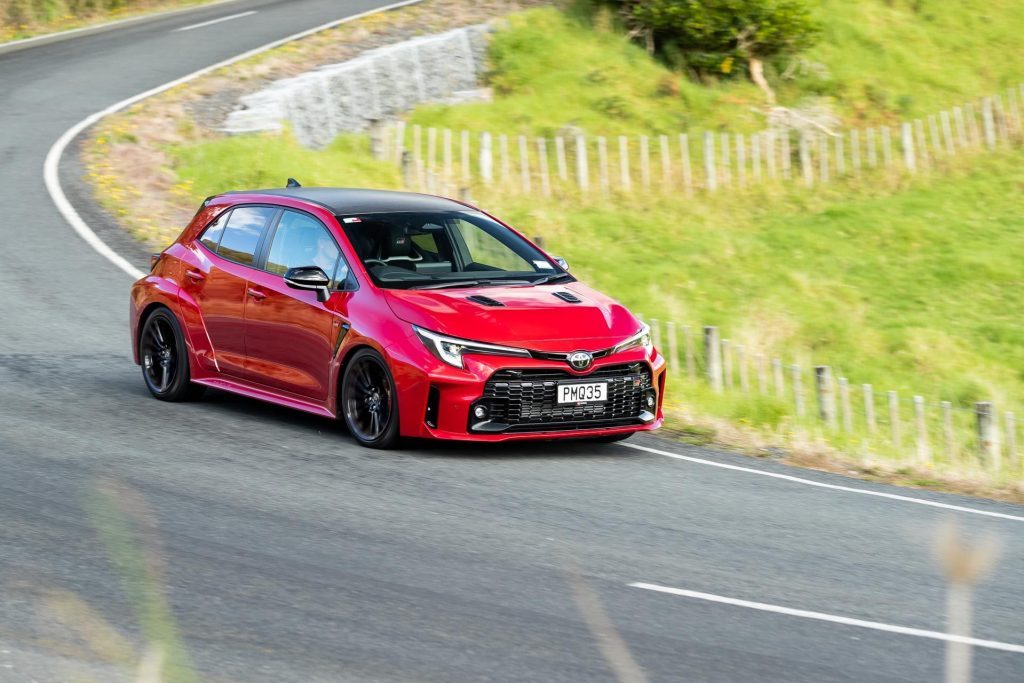
Just how fast we can’t confirm as our timing gear had one of its off days, refusing to come online. We didn’t bother then checking out the Launch Control, as it’s easy to get firing off the line, the triple obliging and the traction sorted. While the roar of the tyres cancels much of the engine note, you can hear the induction when you stretch it.
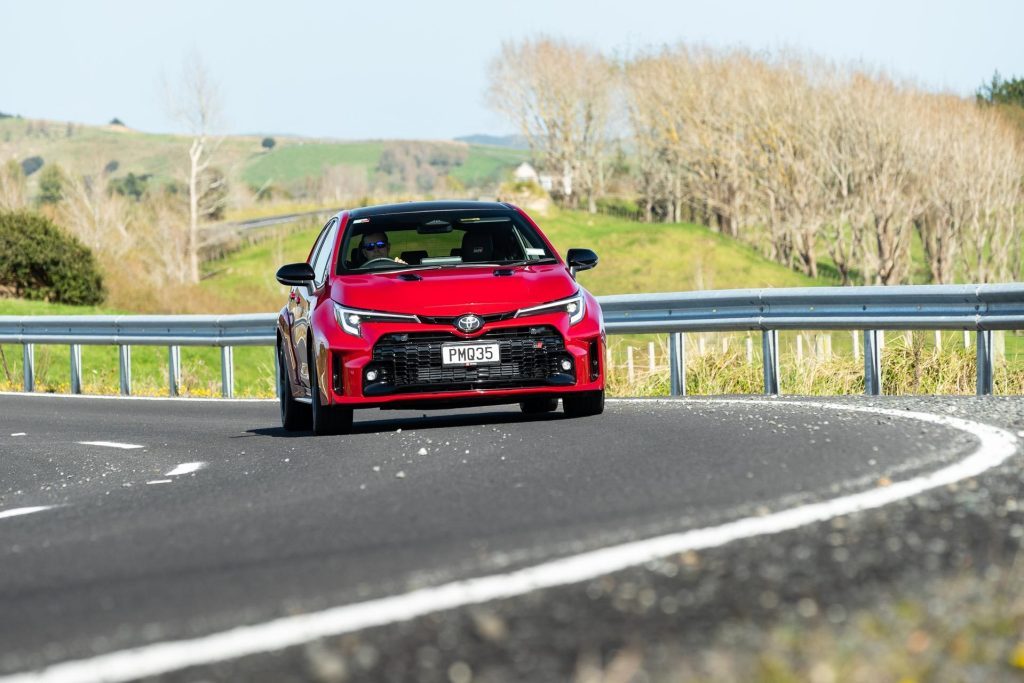
And we like how this engine pulls so happily to its 7000rpm redline, while the response above 3000rpm is delightfully sharp too. The six-speed’s shift action is decent, we only fluffed the occasional second to third shift, while the auto blipper is handy too.
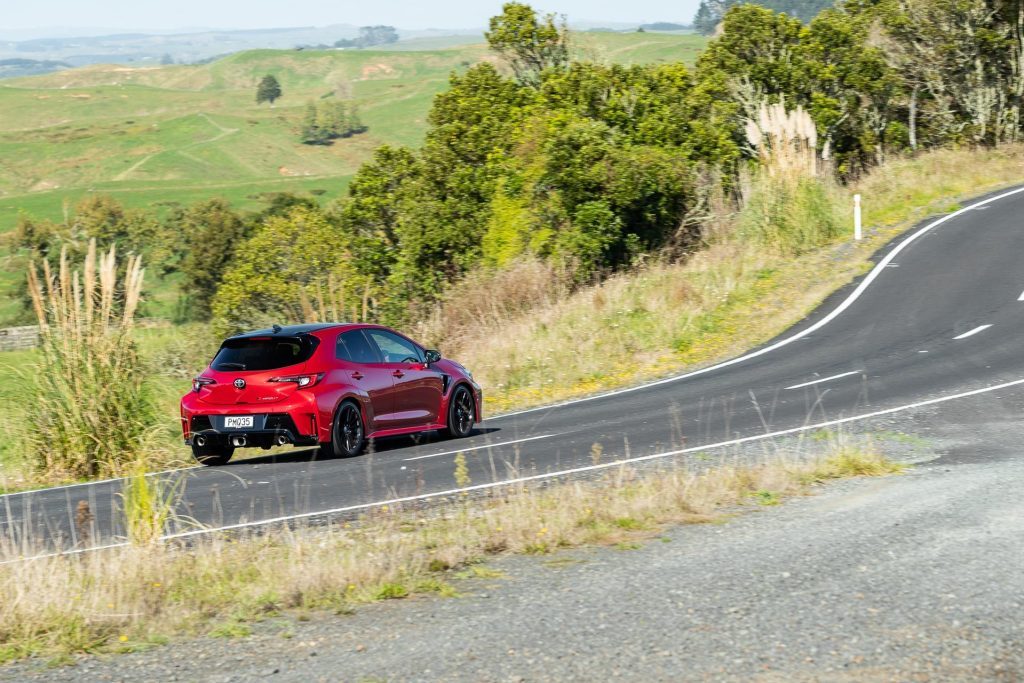
It’s not that hard to do it yourself, even on the brakes, with well placed pedals. On the stoppers, they are into their work quickly with a meaty pedal feel and when you really need to stand on them, they haul things up in a composed fashion.
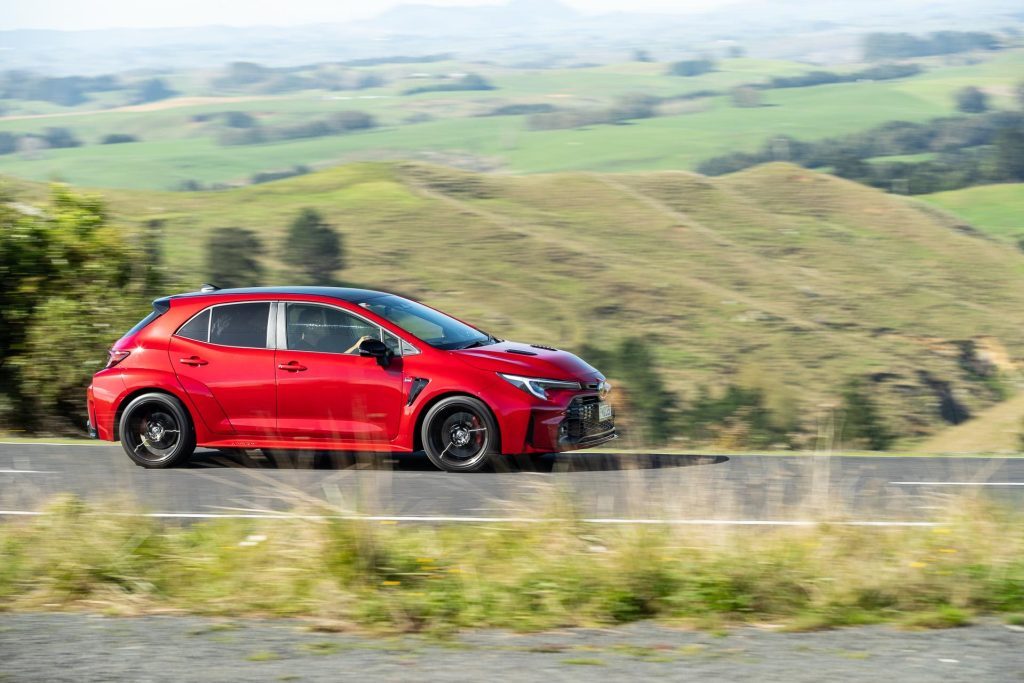
Unflappable sums up the suspension tune too. They maybe firm, but the dampers are largely unfussed by bumps. When the road gets rough, they come into their own, nicely managing the weight transfer as you turn in while keeping the rear end calm.
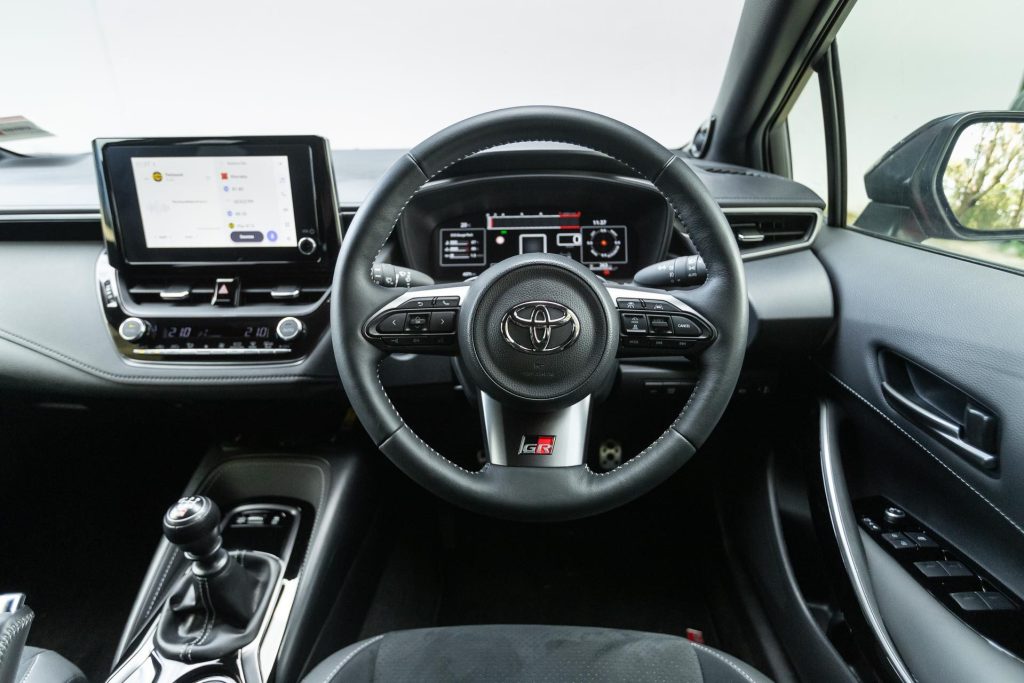
The steering’s well assisted with a little extra heft in Sport mode, the rack quick enough and obedient. It rounds up bends nicely, although there is some understeer to manage. It’s more of a weight distribution thing: the GR will run out of front end grip in the tricky bends.
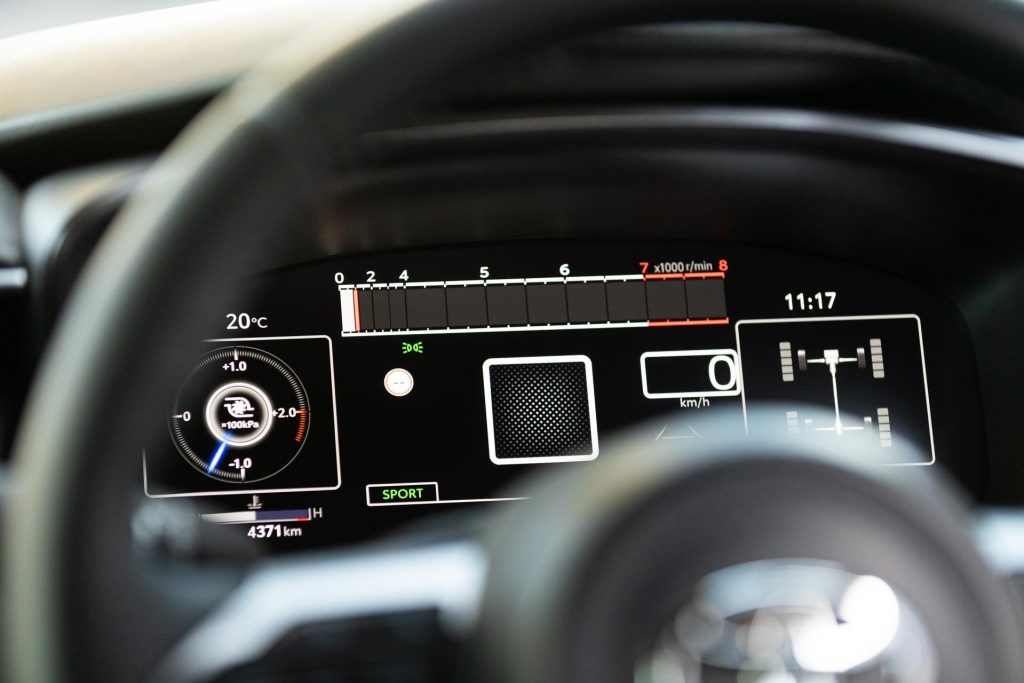
But it’s not a deal breaker given the feedback from the chassis that signals the grip limit is nigh while the faithful controls; the brakes, the steering, the throttle all let you just hold it there and wait for the exit.
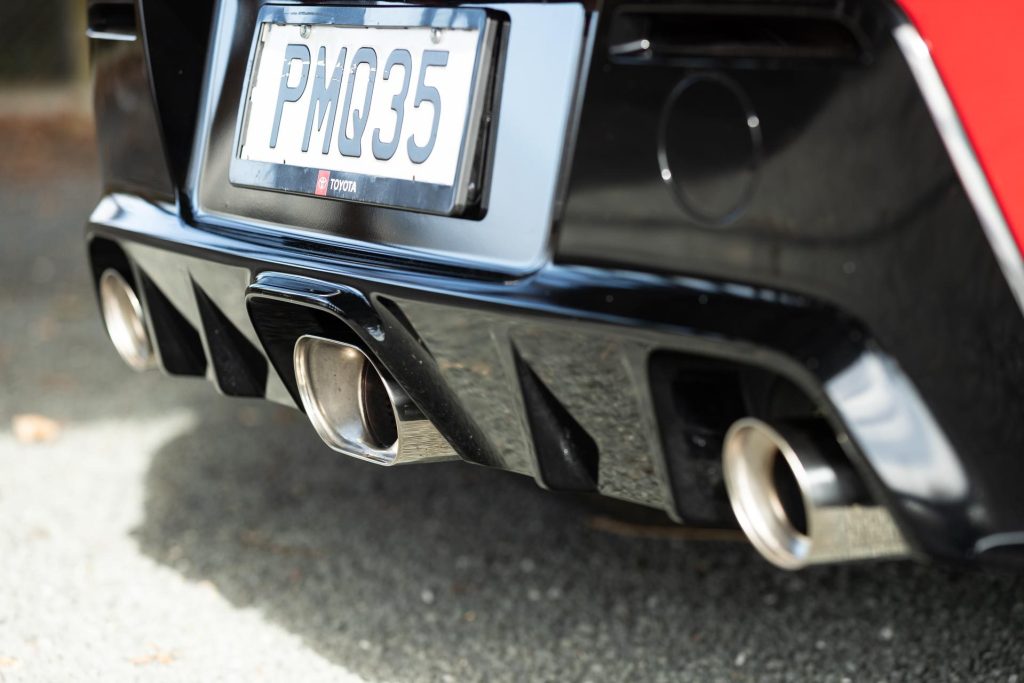
Then you can give it some, the four-wheel drive eliminates any torque steer or tram lining, as you gas it off the turn, and there’s no power-on understeer to contend with. We liked the rear bias for the torque distribution, just because really, and it always delivers the traction.
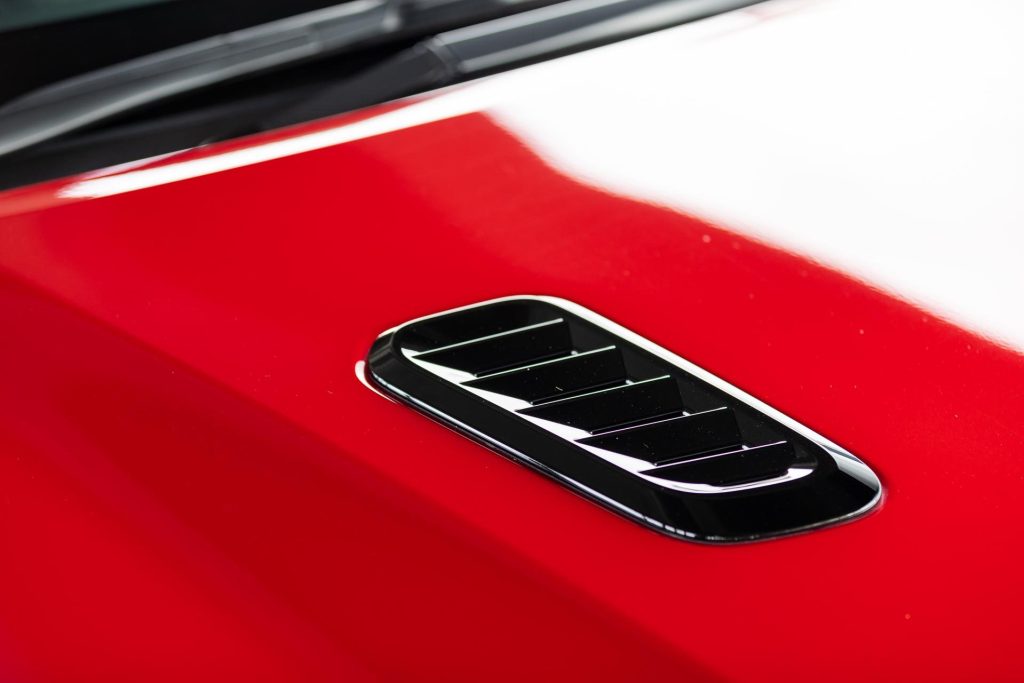
Yes, once you get over that initial disappointment regarding a bit of push, it’s a fine driver’s car. It might not be quite as special as the little GR Yaris on road, but it’s still a pleasure to drive. But is it the ultimate hot hatch at present? Enter the Type R.
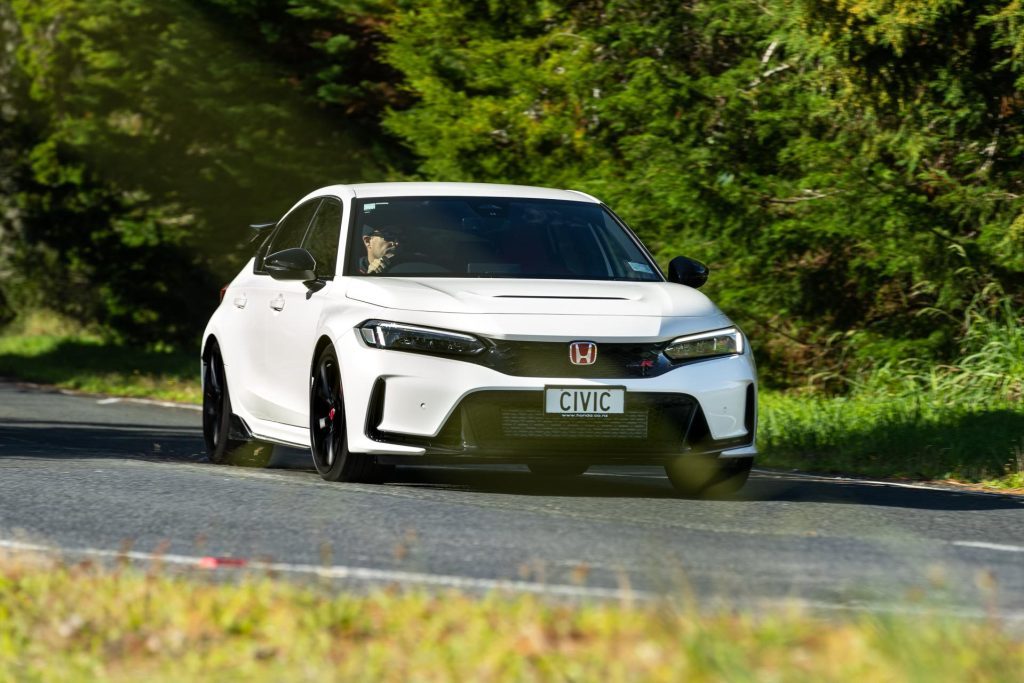
Every hot hatch with a claim to the throne has to face down the king. And currently that’s Honda’s Civic Type R.
Having recently set a sizzling pace on the Nurburgring to reclaim the fastest front driver title (albeit with a special lightweight Euro-spec car, running not so standard Cup tyres), it’s the road racer of the hot hatch set; honed and thrilling.
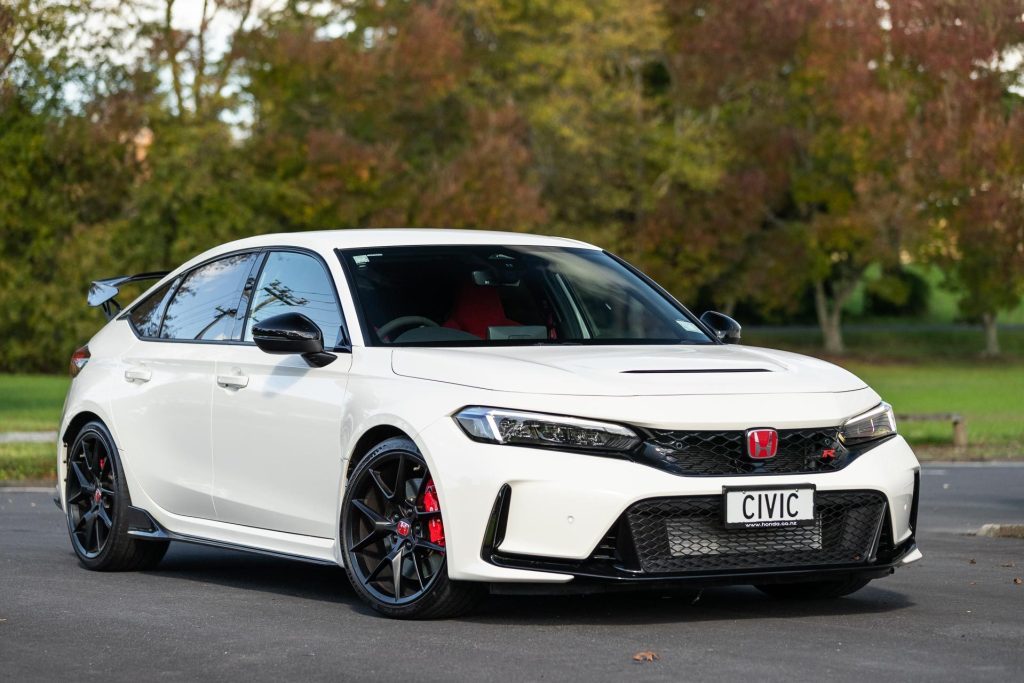
Like the GR Corolla, it’s hot property the globe over, the limited supply allocated via a ballot system here too and it wears a similar price tag to the GR Corolla. Where the Toyota is $74,990 drive away with a $1552.50 fee, the Type R is $72,000 with on roads of $950 and a fee of $2070.
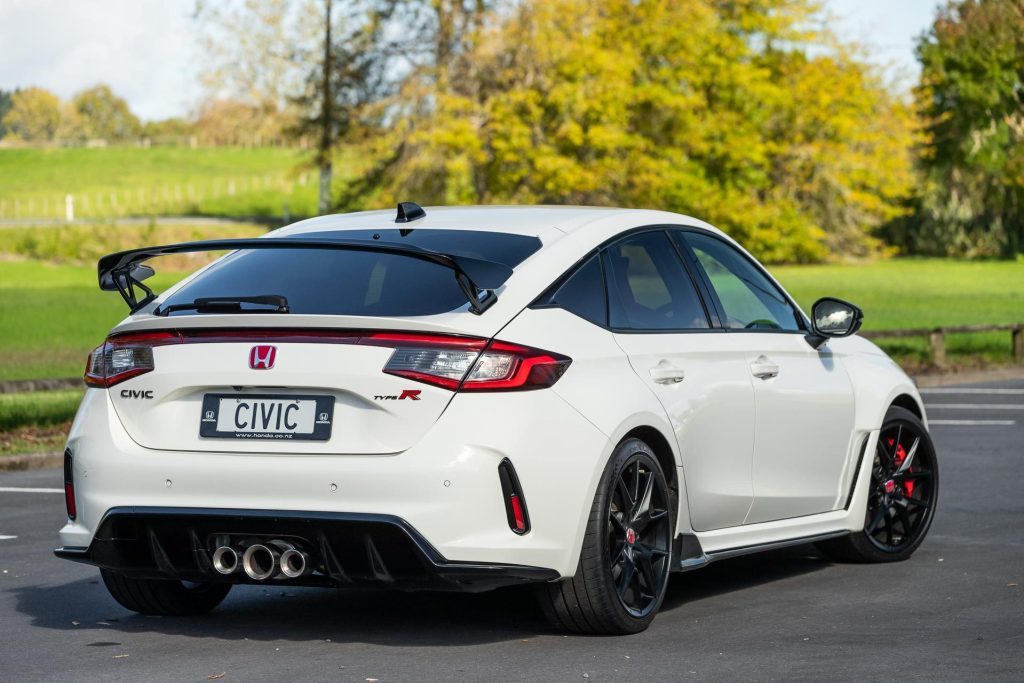
Both are turbocharged weapons that rev to 7000rpm, and like the GR, the Honda is manual only. It’s got a larger, more powerful engine, a 2.0-litre four pot with 235kW and 420Nm.
And it only drives the front wheels. To help alleviate the torque setter demons there is a tricky ‘dual axis’ strut arrangement while aiding traction is a properly sorted Helical-type LSD.
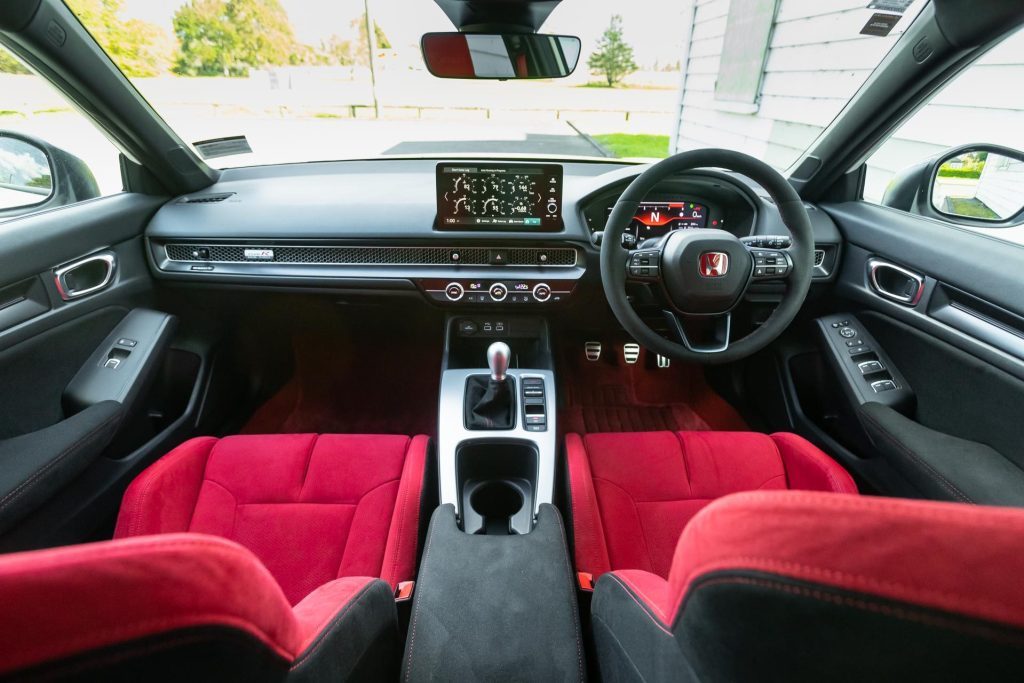
Adaptive dampers are part of the mix, and it has screeds of rubber for a hatchback with a set of 265/30 Michelin Pilot Sport 4s encasing the 19-inch rims.
There are serious stoppers on board too, with two-piece 350mm rotors up front and four pot Brembo calipers.
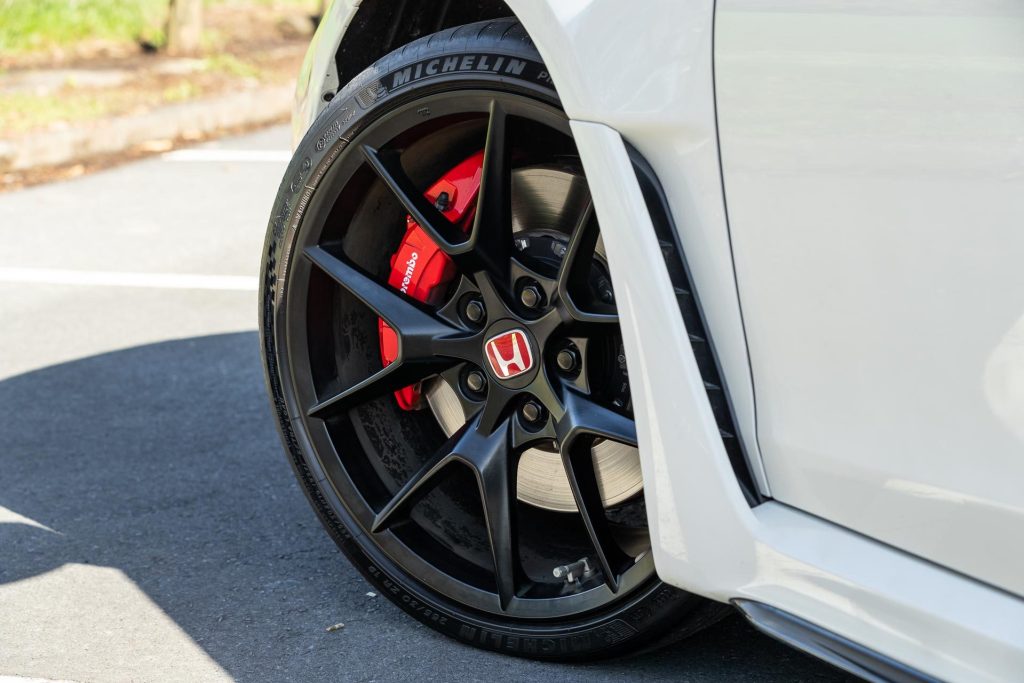
While the AWD GR Corolla has the unbeatable traction advantage over the front drive Type R, the other key difference between them is size; the Civic is the bigger car, wider and longer, and those increased track and wheelbase dimensions give it an edge in outright grip. Wider and longer, it imparts a feeling of sitting lower too.
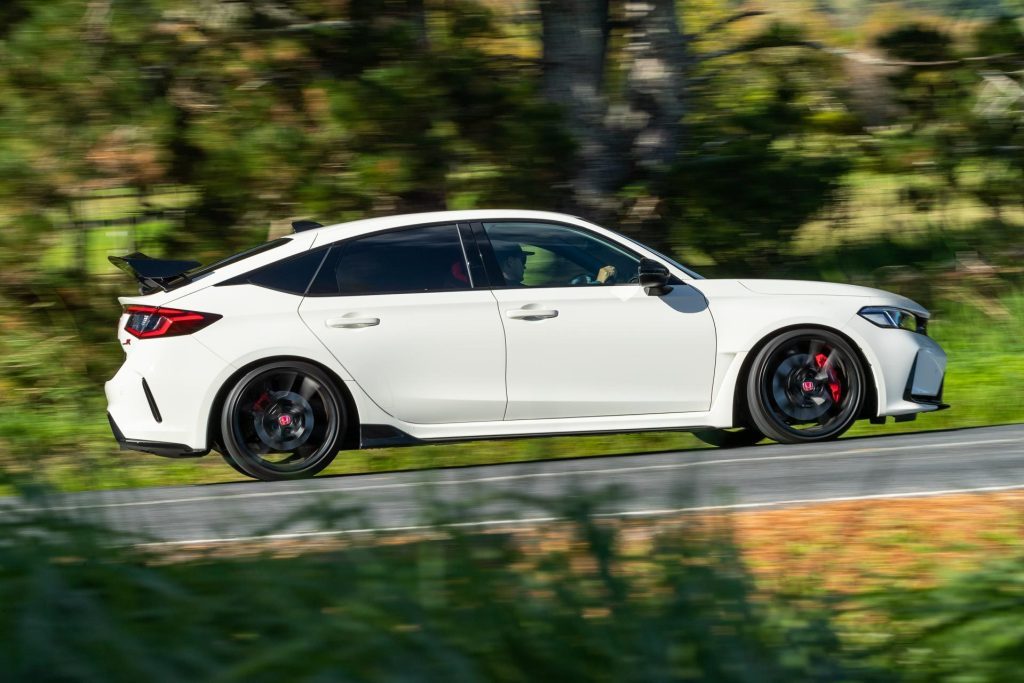
While we couldn’t line these two up for a direct back-to-back comparison, we literally handed the Toyota back and picked up the Honda, swapping from one hot seat into the next.
As hinted at already, the outright grip of the Type R, with its wider tracks, gives it unnatural stick in a bend, especially for a hatchback. It’s still gripping hard while the GR Corolla, when hurled through the same corners, was beginning to surrender its line.
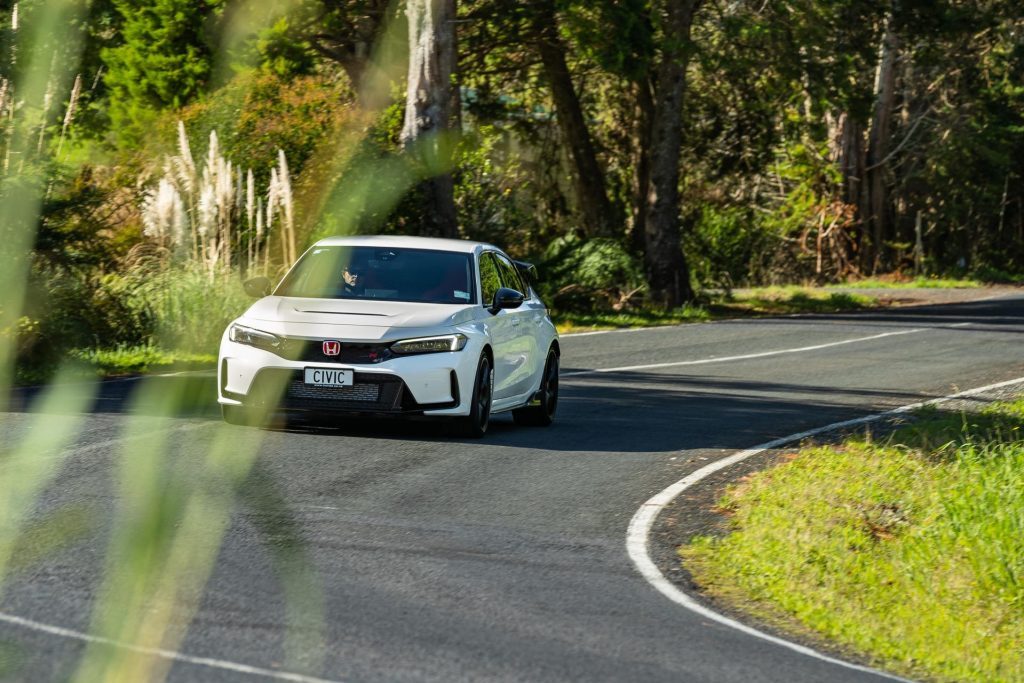
The Type R’s steering turns its front end with more vigour too, and you get better messaging back. Each has great brakes, though the Type R’s feel stronger, especially that initial bite when you give the pedal a decent jab. It’s the steadfast stability of the Type R that wows, yet it also remains rather nimble and willing to change direction smartly.
But the GR isn’t completely bloodied. The Corolla tends to steamroll the bumps, it’s just not phased by them and so is less affected by bump steer.
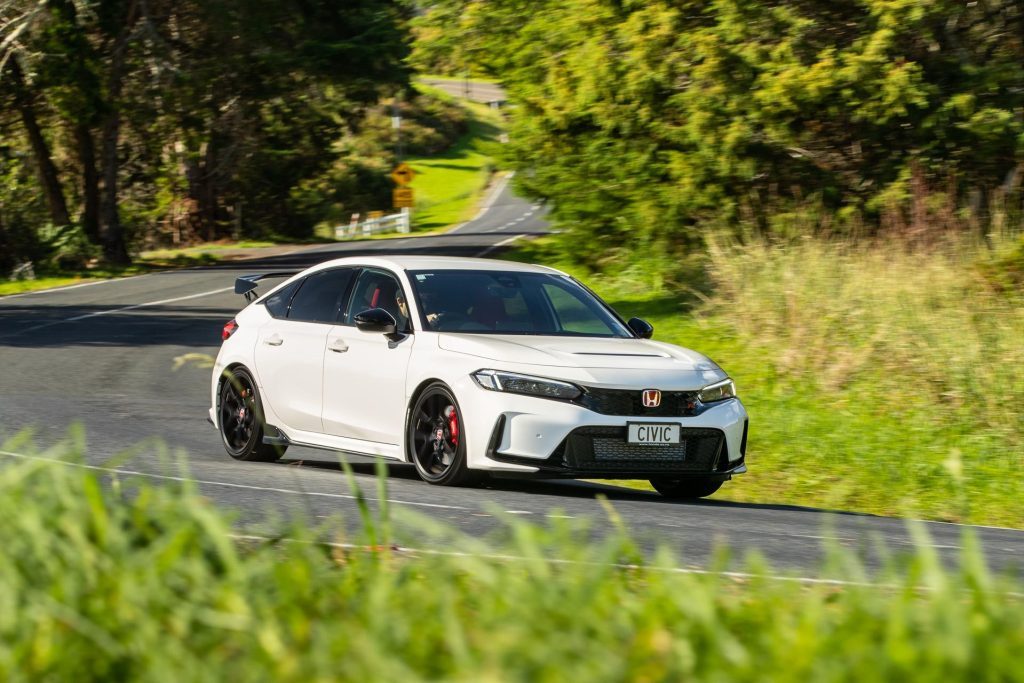
Run the Civic in its Sport mode (don’t even think about R until you hit the track), and it can cope with some bumps, but the Comfort setting for the shockers is preferable over poor surfaces (which unfortunately is the new normal out there) where you trade a dash of control for compliance.
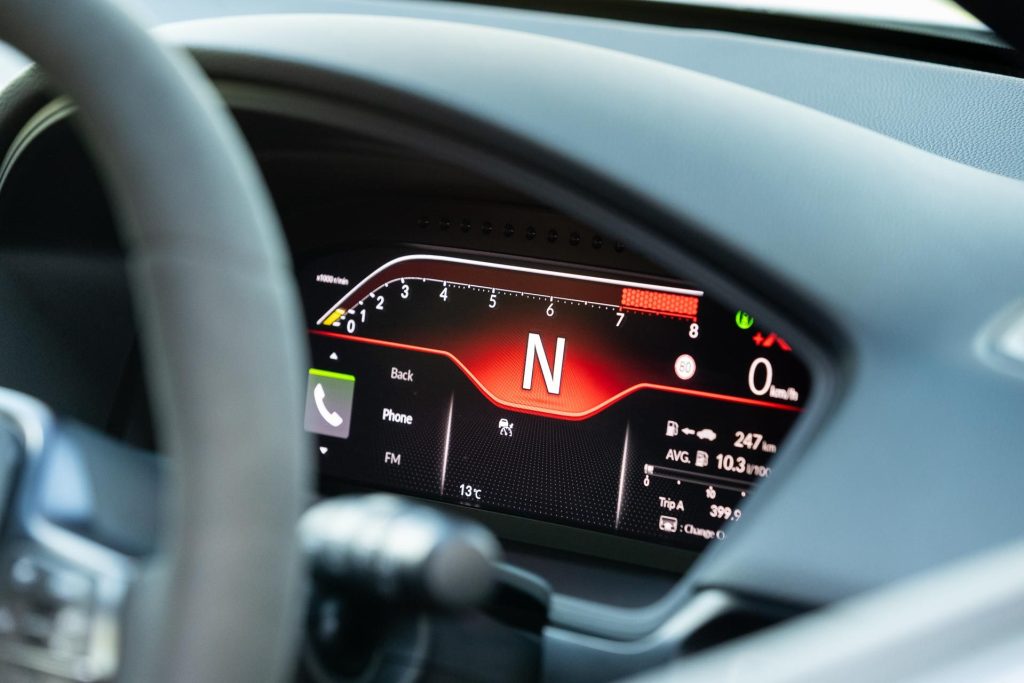
While the Type R has decent traction, it can be corrupted by the contours of the road, tramlining as you power out of a bend. Sometimes you can steer your way straight, other times you need to back off. But not in the GR Corolla, which always pulls hard and true.
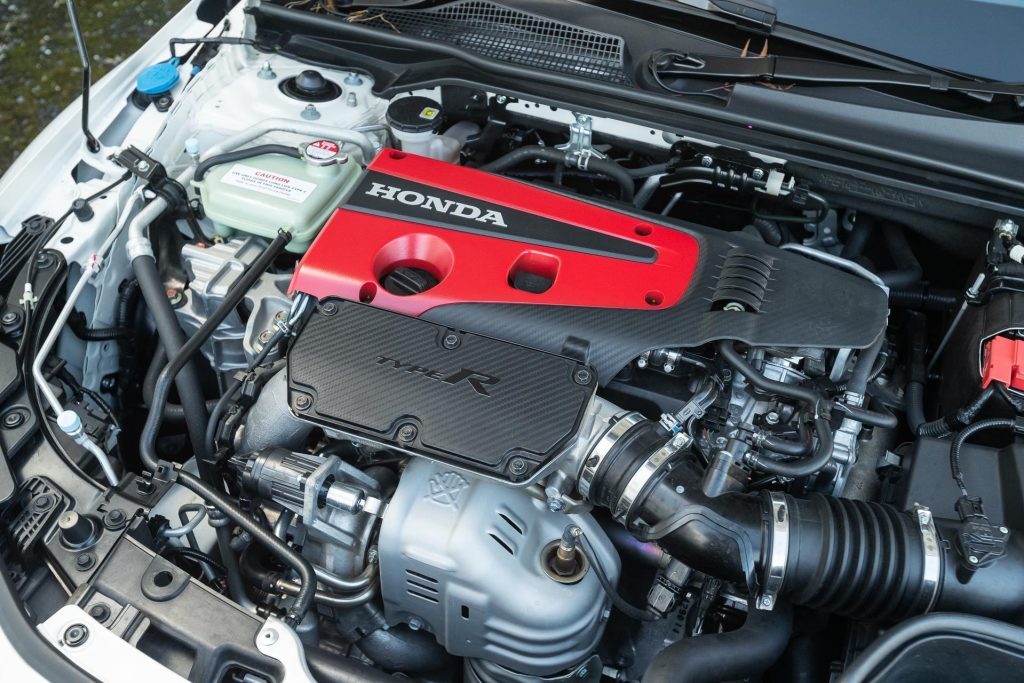
The GR’s triple wins the character award, but the Type R’s larger engine pulls harder, the torque coming on stronger and it’s hauling less mass. Both spin eagerly, and are turbo units that will pull strongly to 7000rpm without running out of breath.
The Honda’s transmission has a dash more slickness to each shift, especially across the gate, the throw a micron or two shorter and so it’s easier to ram each shift through sweetly.
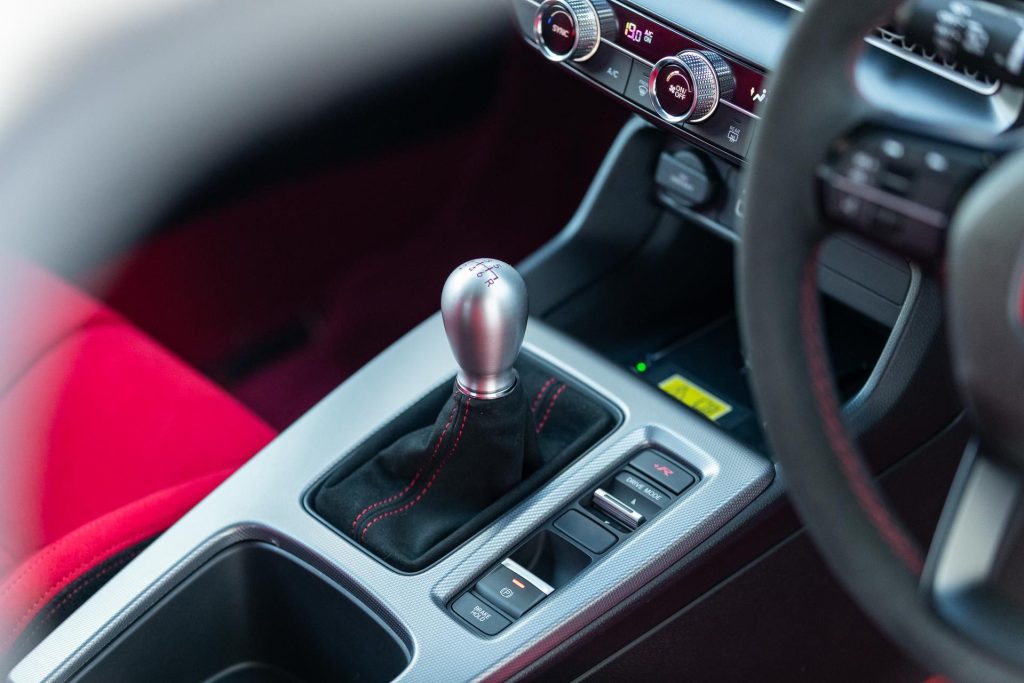
The Comfort mode setting adds everyday civility to the Civic, it riding just a smidge better than the GR on city streets. The 2.0-litre also pulls better from right down low, more tractable at slower speeds in higher gears.
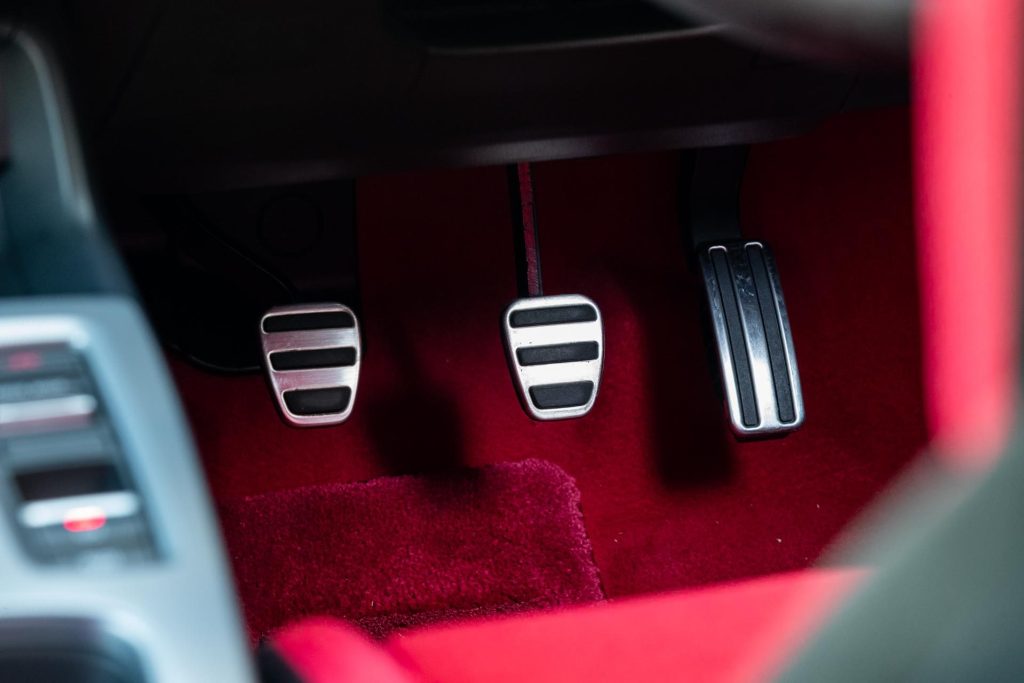
Its large turning circle makes the Type R harder to manoeuvre around however, while the lower lying front end will occasionally touch down when entering a tricky driveway.
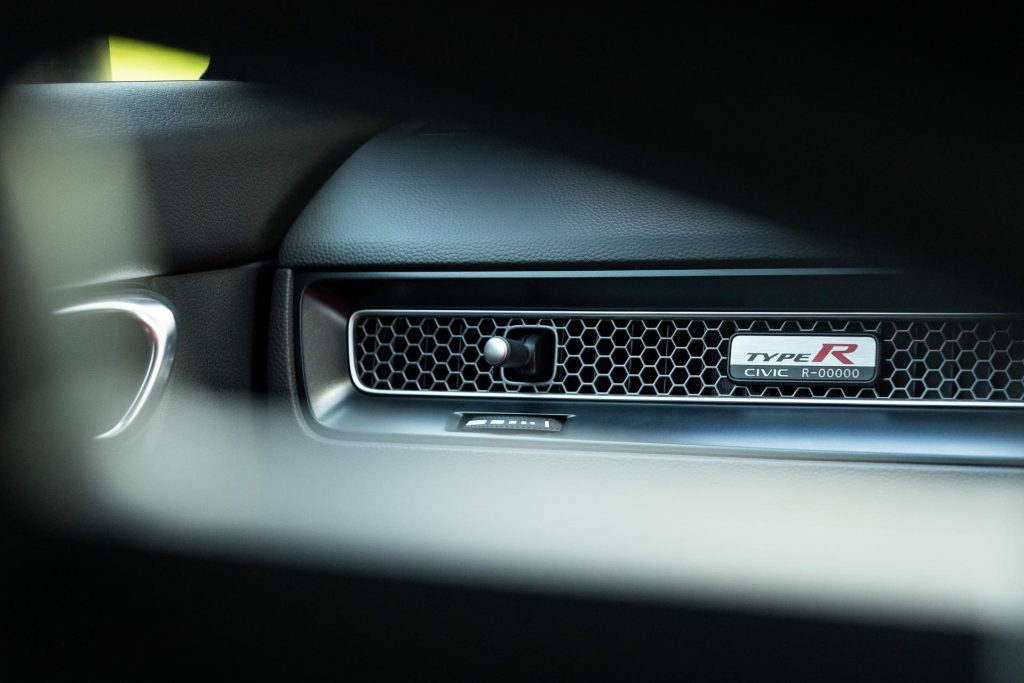
Both have short ratios to keep them charging but neither would be great long distance cruisers, the engine sat at 2200rpm at 100km/h in the Honda and 2500rpm in the Corolla. And both generate a right old din in terms of rubber related roar on coarse chip, the Honda more so.
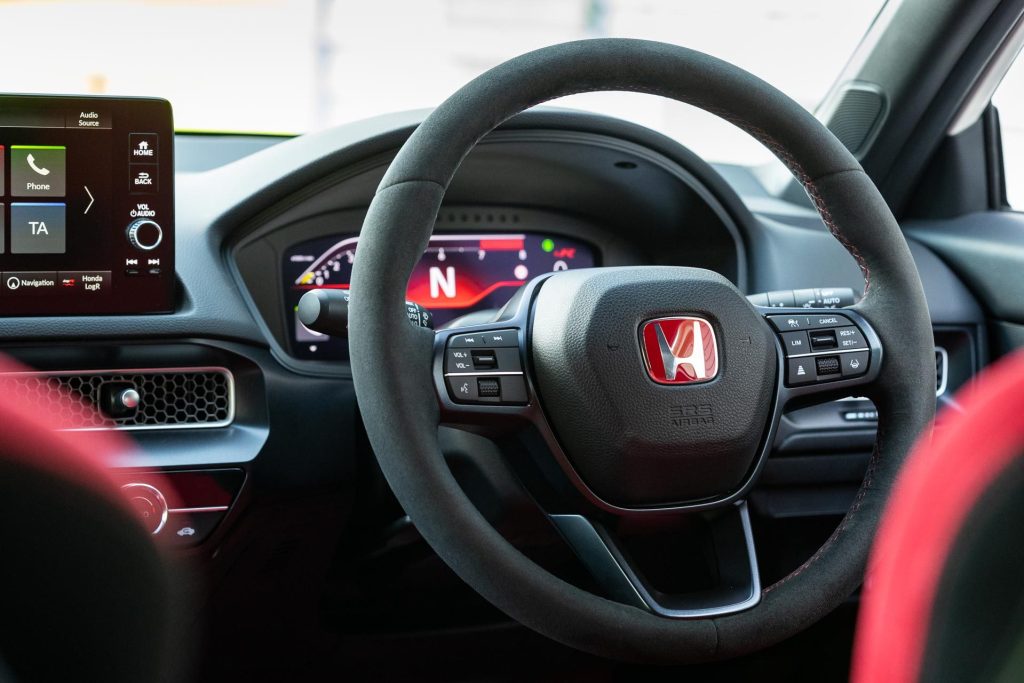
The Type R has a similar thirst to the GR, 13L/100km in urban running though with a mix of motorway/highway mileage, it’ll average out in the 10s.
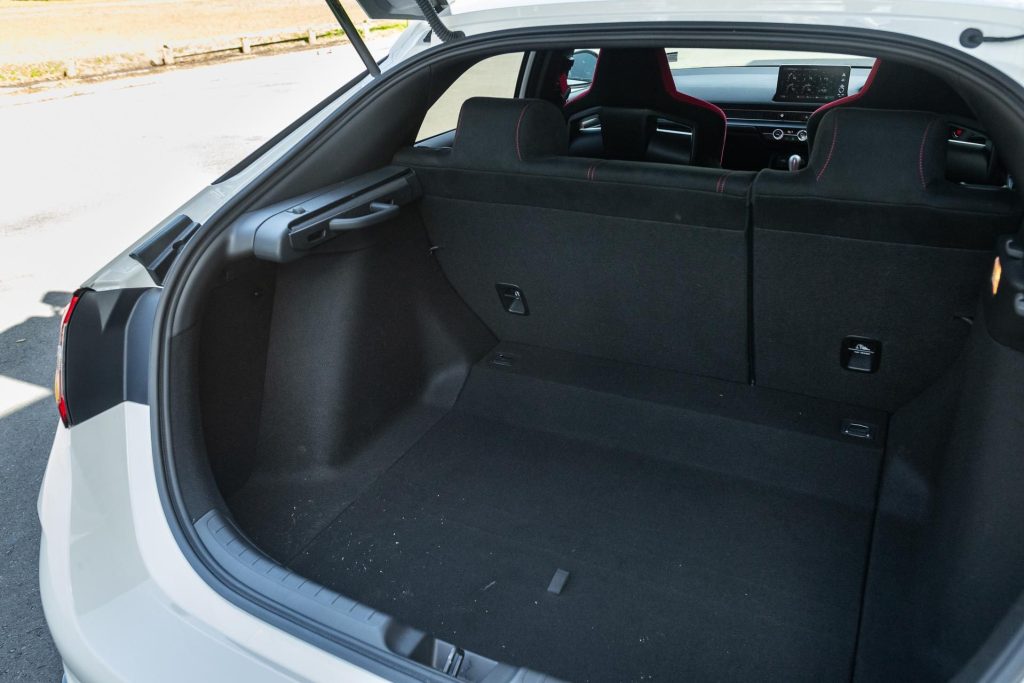
Being the bigger car, the Type R has more legroom in the rear, but there’s seatbelts for two only, while the boot space is superior too, the area longer and wider.
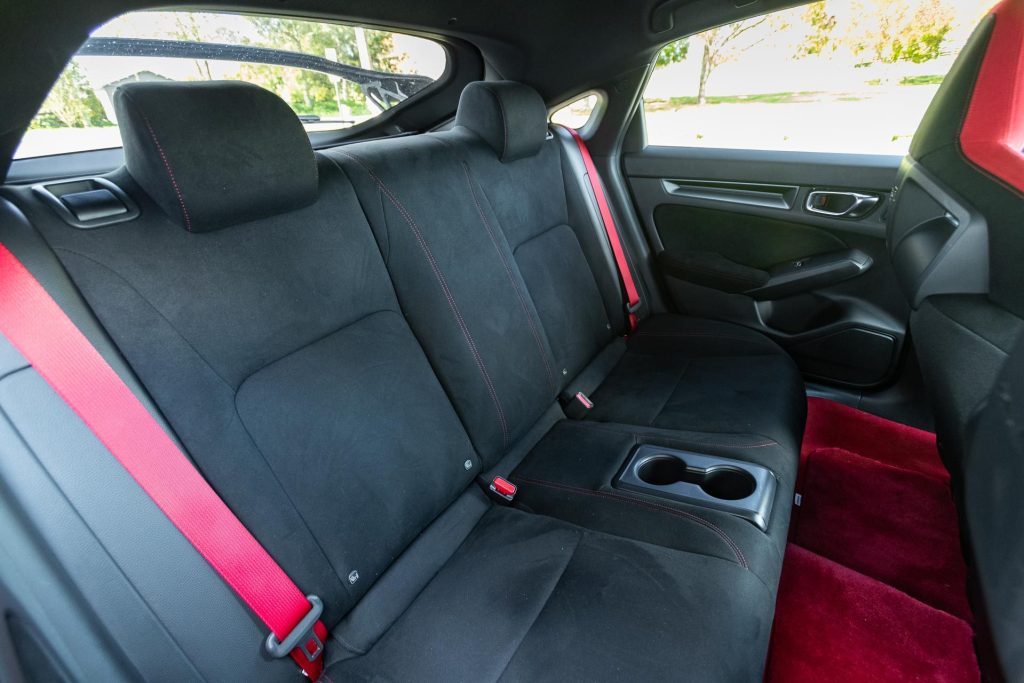
The red Type R buckets are a snugger fit than those in the GR, and while they aren’t really a chore to extract yourself from, the Corolla’s seats are more user friendly in this regard. But you can get lower and racier in the Type R.
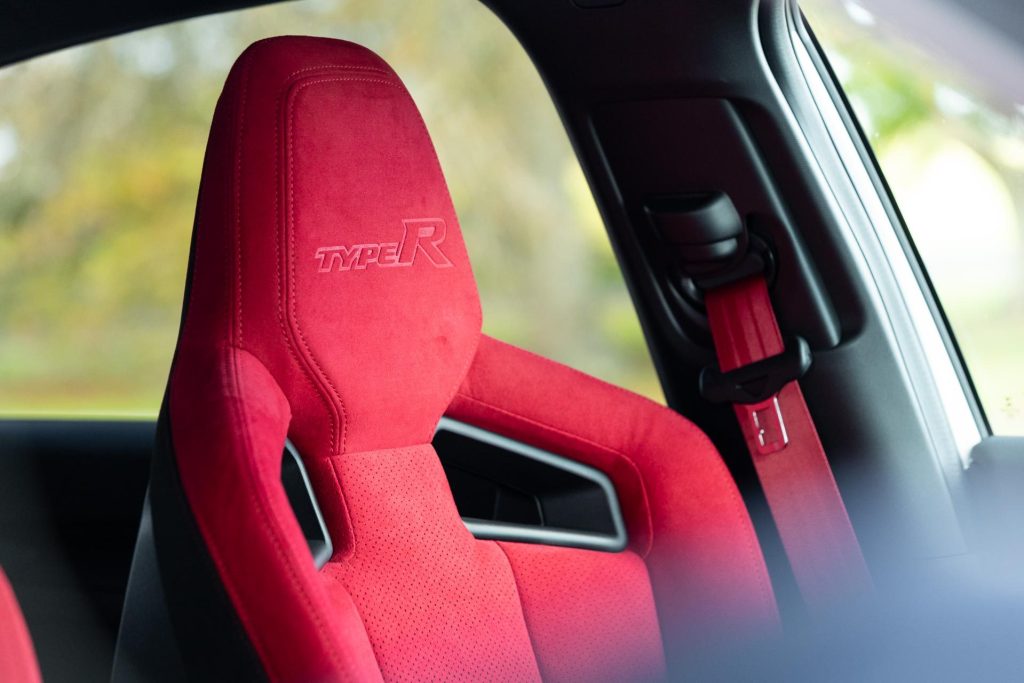
It’s difficult to separate these two, each with enough character and quirks that will endear them to those after a thrilling hot hatch. Each is just that.
The Toyota is very capable with its AWD and an obliging suspension set up that eats up NZ roads. Its triple is a real character and with good steering and brakes, it has the attributes of a great driver’s car.
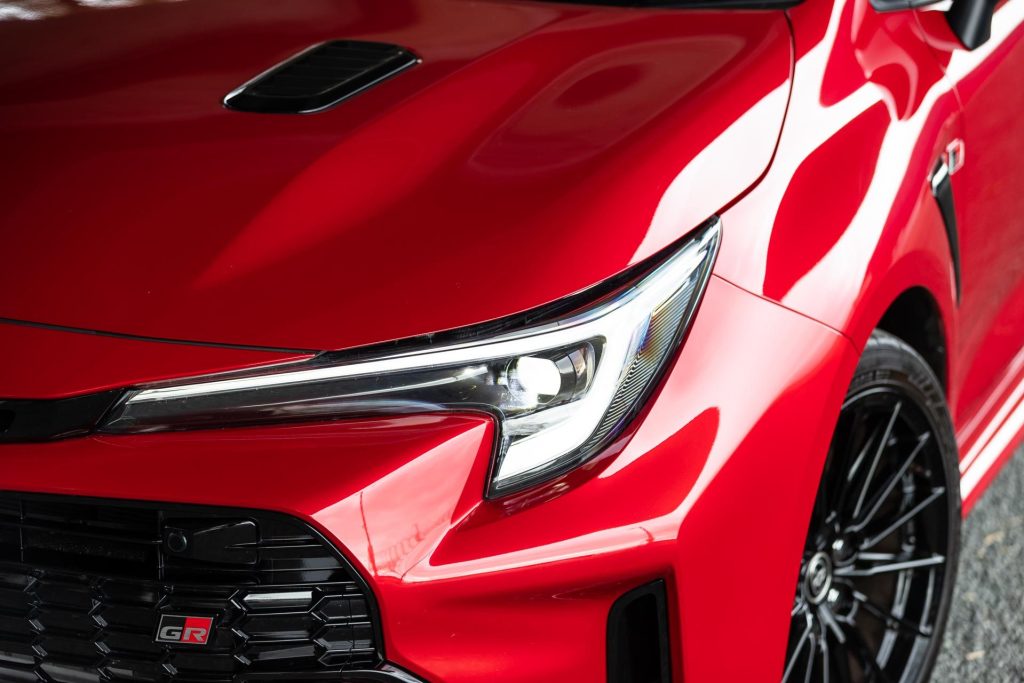
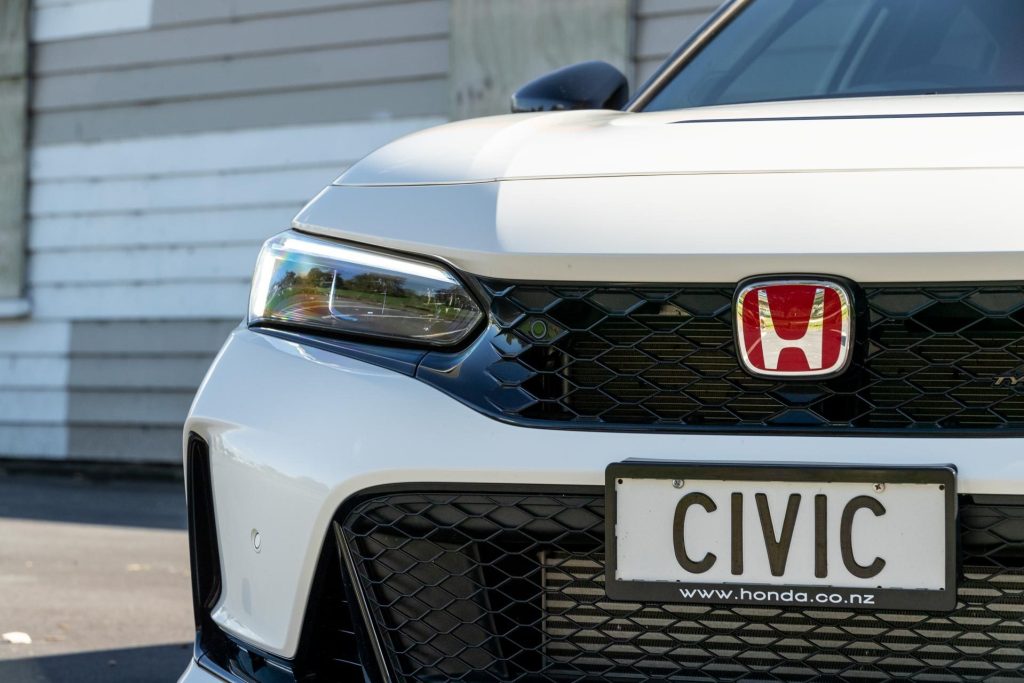
But the Honda does too. It’s just that bit quicker, edgier and honed in most areas.
If you like the odd hoon at a trackday, this is the weapon. That it’s also more practical (for a family of four that is) helps it retain its hot hatch crown.
| Model | Toyota GR Corolla |
| Price | $74,990 |
| Clean Car Discount | Fee – $1,552.50 |
| Engine | 1618cc, IL3, T, DI |
| Power/Torque | 221kW/370Nm |
| Drivetrain | 6-speed manual, AWD |
| Fuel Use | 9.4L/100km |
| C02 Output | 213g/km |
| 0-100km/h | 5.3sec |
| Weight | 1480kg |
| Model | Honda Civic Type R |
| Price | $69,000 |
| Clean Car Discount | Fee – $2,070 |
| Engine | 1,996cc, IL4, T, DI |
| Power/Torque | 235kW/420Nm |
| Drivetrain | 6-speed manual, FWD |
| Fuel Use | 9.7L/100km |
| C02 Output | 222g/km |
| 0-100km/h | 5.72sec |
| Weight | 1,446kg |


